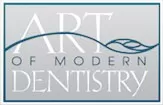How to Protect Your Toothbrush
 This is a key explaining what our toothbrushes are exposed to and how it does matter the way you clean and store your toothbrushes. Yes, it is pretty gross to think about what germs and bacteria might be making its way to our toothbrushes, so don’t over-think it. This is just motivation to store, protect and clean the thing we use to clean our mouths. If you have any concerns about your oral hygiene talk to any one of our dentists in Lakeview or South Loop.
This is a key explaining what our toothbrushes are exposed to and how it does matter the way you clean and store your toothbrushes. Yes, it is pretty gross to think about what germs and bacteria might be making its way to our toothbrushes, so don’t over-think it. This is just motivation to store, protect and clean the thing we use to clean our mouths. If you have any concerns about your oral hygiene talk to any one of our dentists in Lakeview or South Loop.
Clean before you clean: What’s on your toothbrush just might surprise you
University of Alabama at Birmingham
Do you know Staphylococci, coliforms, pseudomonads, yeasts, intestinal bacteria and — yes — even fecal germs may be on your toothbrush?
Appropriate toothbrush storage and care are important to achieving personal oral hygiene and optimally effective plaque removal, says Maria L. Geisinger, DDS, assistant professor of periodontology in the School of Dentistry at the University of Alabama at Birmingham.
“The oral cavity is home to hundreds of different types of microorganisms, which can be transferred to a toothbrush during use,” Geisinger said. “Furthermore, most toothbrushes are stored in bathrooms, which exposes them to gastrointestinal microorganisms that may be transferred via a fecal-oral route. The number of microorganisms can vary wildly from undetectable to 1 million colony-forming units (CFUs). Proper handling and care of your toothbrush is important to your overall health.”
What constitutes proper care and handling? Geisinger answers several questions that may help better protect families from toothbrush germs.
Q. Can bacteria from your toilet really reach your toothbrush?
A. “The short answer is ‘yes.’ Enteric bacteria, which mostly occur in the intestines, can transfer to toothbrushes and thus into your mouth. This may occur through inadequate hand-washing or due to microscopic droplets released from the toilet during flushing. The topic of dirty toothbrushes was a recent subject of the popular Discovery Channel show “Mythbusters,” when 24 toothbrushes were tested, and all of them demonstrated enteric microorganisms — even those that had not been inside of a bathroom. In fact, toothbrushes may be contaminated with bacteria right out of the box, as they are not required to be packaged in a sterile manner.”
Q. What is the proper way to clean your toothbrush to help remove germs?
A. “You should thoroughly rinse toothbrushes with potable tap water after brushing to remove any remaining toothpaste and debris. Additionally, soaking toothbrushes in an antibacterial mouth rinse has been shown to decrease the level of bacteria that grow on toothbrushes.”
Q. How should you to store your toothbrush to avoid germ and bacteria buildup?
A. “The American Dental Association recommends that you not store your toothbrush in a closed container or routinely cover your toothbrush, as a damp environment is more conducive to the growth of microorganisms. Also, storing toothbrushes in an upright position and allowing them to air dry until the next use is recommended, if possible. If more than one brush is stored in an area, keeping the toothbrushes separate can aid in preventing cross-contamination.”
Q. What is the proper toothbrush protocol when you are sick?
A. “Any illness that can be transmitted through body fluids should warrant separation of the toothbrush of the infected individual and, if economically feasible, replacement of the toothbrush after the illness.”
Q. How often should your toothbrush be replaced?
A. “Toothbrushes should be replaced at least every three to four months or when bristles become frayed and worn, whichever comes first.”
There are four other steps Geisinger recommends be followed to help achieve a higher quality of oral health and avoid or limit some of the causes of bacteria toothbrush buildup.
Use antimicrobial mouth rinse prior to brushing. This can decrease the bacterial load in your mouth considerably and may reduce the number of microorganisms that end up on the toothbrush after brushing.
Engage in routine dental care. Routine dental care, including regular dental cleanings, can reduce the overall bacterial load in your mouth, and the types of bacteria present, and can therefore reduce bacteria on your toothbrush. It is especially important for those with gum disease, as the oral bacteria present in their mouths can enter the bloodstream as they perform everyday activities, including eating, chewing gum and toothbrushing.
Wash your hands. Hand-washing after using the restroom and prior to using your toothbrush can reduce the likelihood of fecal-oral contamination.
Do not share toothbrushes. This seems like a no-brainer, but a large proportion of spouses admit to sharing toothbrushes. That means bacteria on those toothbrushes are being shared, including the ones that cause dental decay and periodontal disease — the two major dental diseases in adults.
Article shared by ScienceDaily




